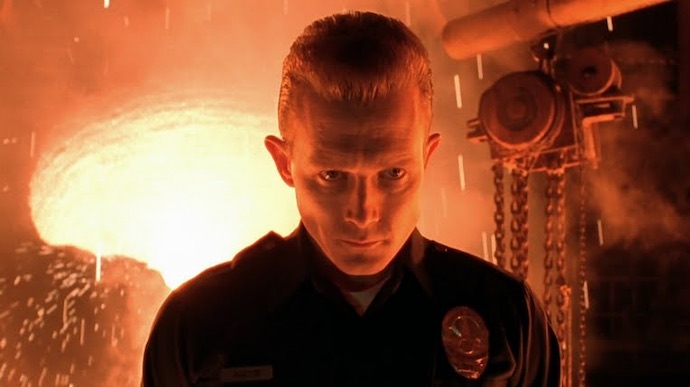First, the rights to the Terminator franchise were—as Mario Kassar later described—“a mess.” Second, James Cameron couldn’t do what he wanted with the limits of filmmaking technology at the time. So, he waited until the right time came about. When James Cameron made The Abyss in 1989, he used that film as an opportunity to test the CGI technology he’d end up using to create his sequel to The Terminator. In the end, that test provided him with everything he needed to bring his vision across the big screen. In 1990, Mario Kassar secured the rights to the franchise, allowing the Terminator sequel to officially move into production. And then in 1991, after a gruelling shoot and a vast budget that exceeded any ever spent on a film before, Cameron unveiled Terminator 2: Judgment Day. The picture met with adoration from critics and fans alike, proving to be a hit at the box office by raking in over $500 million worldwide. Thirty years later, the film is considered an action genre classic and a rare example of when a movie sequel ends up significantly better than the original. Here’s why Terminator 2: Judgment Day isn’t just the best sci-fi action movie of all time, but remains king of all action movies to this day.
1. The Performances
According to Emma Thompson—who worked with Schwarzenegger on the film Junior—Schwarzenegger is very up-front about his lack of natural acting ability. In playing a machine that has to learn how to talk and act like a human, that lack of acting talent became an asset. Renowned film critic Roger Ebert alluded to this in his initial review of the film: “Schwarzenegger’s genius as a movie star is to find roles that build on, rather than undermine, his physical and vocal characteristics.” It’s a wholly accurate and insightful sentiment. Schwarzenegger towers in the film, giving a realized performance as the T-101 hero while his co-stars deliver their own career-best works, too. Linda Hamilton’s drastically different Sarah Connor provides the cold, unfeeling nature that one would expect from the cyborg she partners with, and Edward Furlong is her antithesis as John Connor, a boy who must accept his responsibility and retain his most human traits.
2. James Cameron’s Vision
The first Terminator film had plenty of vision from its director and creator, but lack of budget left James Cameron hamstrung, as evidenced in one scene where the Terminator breaks into a car—which was filmed without a permit and used a real car parked in Los Angeles. Terminator 2, on the other hand, became the most expensive movie ever made at the time of its release, with more money sunk into ILM’s special effects budget than the whole first film had in its entirety. (The film’s financiers were concerned when the film went over budget by $15 million, but a 25-minute screening calmed those concerns.) This vast chasm of financial difference meant that James Cameron could operate without worry in how to execute his vision, knowing he could afford whatever was necessary to get the job done.
3. The Revolutionary Visual Effects
The budget that went to ILM (Industry Light & Magic) to deliver the effects needed for Terminator 2 topped an excess of $5 million, with some reports indicating it could have been closer to $6 million. At the time, that amount of cash wasn’t a usual occurrence in Hollywood to spend on CGI. However, Cameron’s ambitious ideas meant that there was no other way to make the picture without ILM’s involvement. The final results of ILM’s contribution still stand out today, as the effects barely appear to have aged at all. Robert Patrick’s T-1000 and his liquid metal body still feels as terrifying as he did in 1991. ILM’s work helped set the benchmark for blockbuster films after Terminator 2, with CGI filmmaking dominating subsequent big-budget pictures. Many years later, ILM would innovate again by taking another step forward with their StageCraft technology.
4. The Emotional Story
After securing the franchise rights in 1990, Mario Kassar gave James Cameron the green light to work on Terminator 2… along with a 20-month deadline. The release date was firmly set to be July 4th, 1991. Which wasn’t ideal since Cameron didn’t have a story yet—so he went to work with his old friend, William Wisher, intent on changing the franchise. The resulting story became one that was much more visceral than the audience had expected walking into the sequel to The Terminator. The final scenes where the T-1000 melts in the firey pit were met with a collective sigh of relief from the audience, who were happy to see that the trio had destroyed the machine. But what came next left the emotional core of the audience exposed and vulnerable: Arnold Schwarzenegger’s T-101 had to be destroyed, too. The whole movie builds up the emotional bond between John Connor and the machine, and audiences were all on board. So, when the boy had no choice but to say goodbye to his friend, audiences were left in tears. James Cameron’s idea was to subvert the audience’s expectation for the film by luring them into an emotional connection to the machine, which he succeeded in doing perfectly.
5. The Iconic Action Sequences
When James Cameron began production on Terminator 2, he knew that he would be able to pull off what he needed. Armed with his extraordinary budget and ILM’s team of computer wizards, Cameron went about building his action sequences. The first battle between John Connor and the T-101 against the T-1000—where we see Arnold Schwarzenegger on his Harley, dragging John over to his bike as the T-1000 is mere inches behind in a 12-foot black truck—is iconic. It’s proof that Cameron always knew what he was doing. The entire action sequence, which Cameron likened to being a rat in a maze, shows the audience what they’re in for. Further sequences in the film are perfect examples of filmmaking with a big budget—never over-the-top with zealous explosions and never underwhelming. James Cameron’s pairing of his unique action style with Terminator 2’s story gave the film an almost operatic feeling as the chase intensified—one that few other filmmakers have ever equalled. Read next: The best 90s sci-fi action movies, ranked

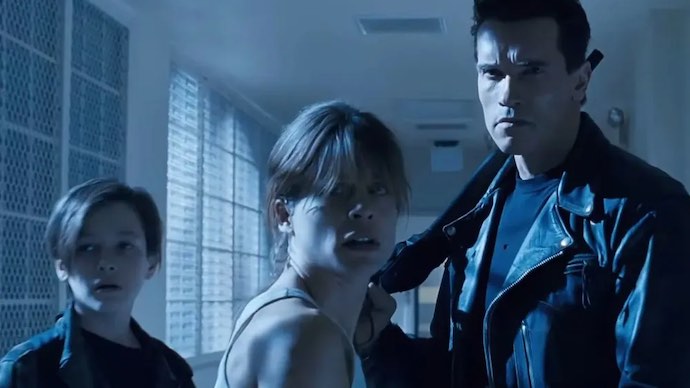
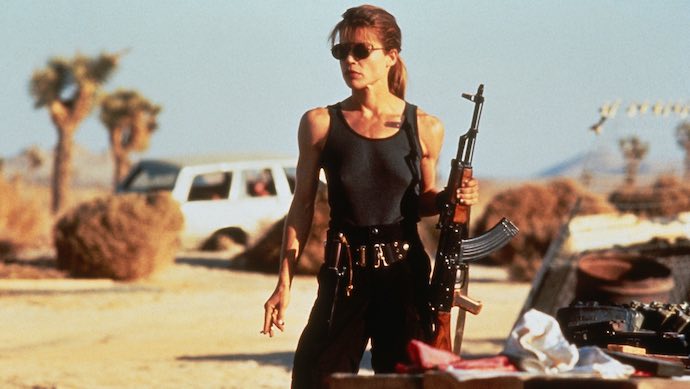
![]()
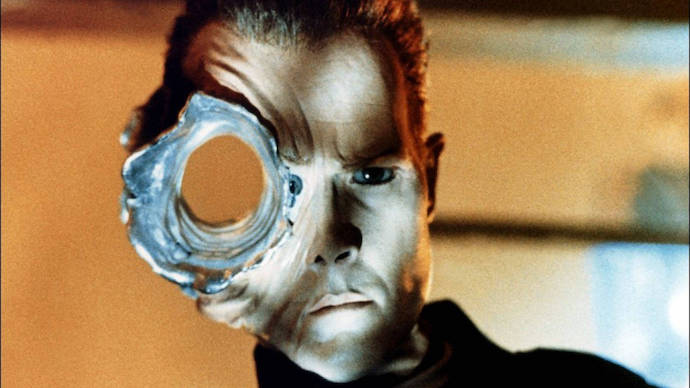

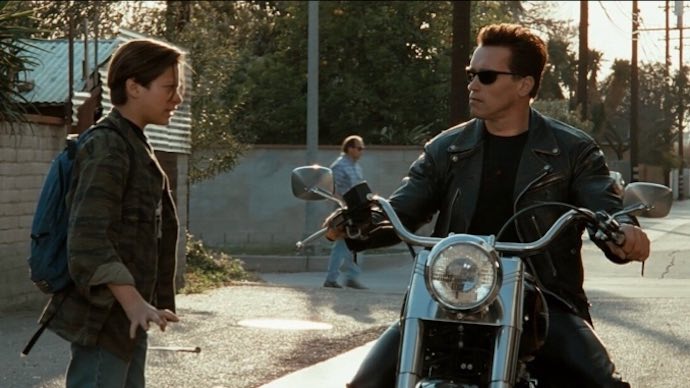
![]()
